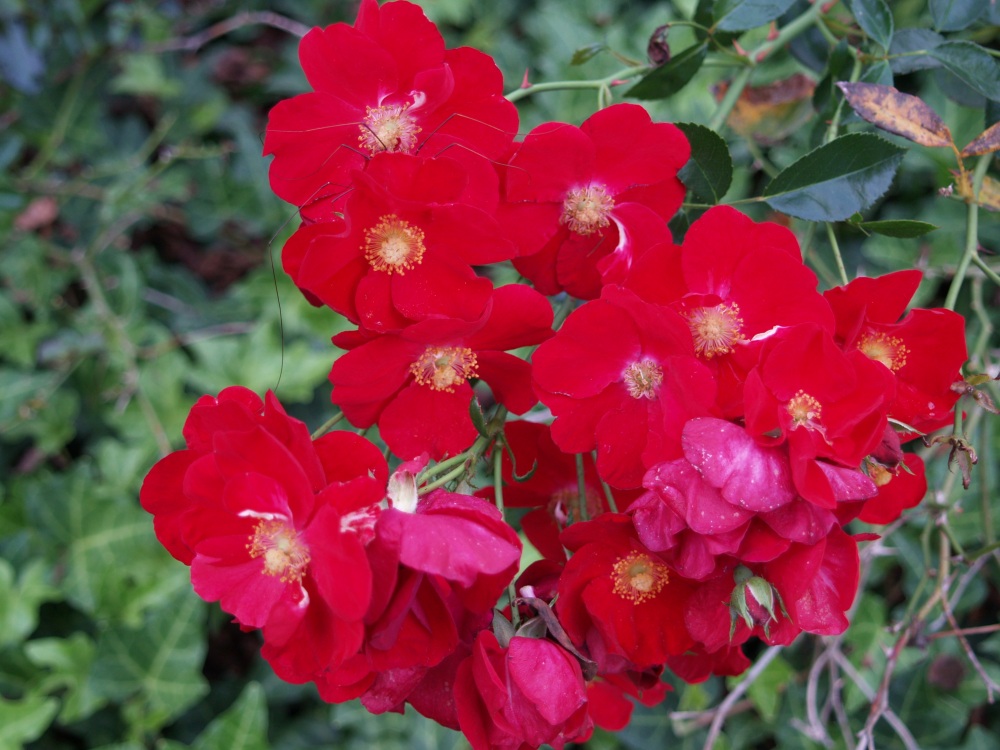The breeze picked up as the rain intensified, and leaves tumbled from the trees.
The dry period from mid August through September has pushed many trees into dormancy earlier than is usual, and with a nudge from wind and rain many leaves have dropped. With another heavy rain forecast we’ll have to wait to see how many leaves remain to know if there will be a significant effect on the autumn foliage color. The native dogwoods have set bud for next spring, and after a dry summer the buds will be heavier than normal, so the dogwoods will be splendid in April. I have noticed heavy flower budding on edgeworthia and rhododendron, as well.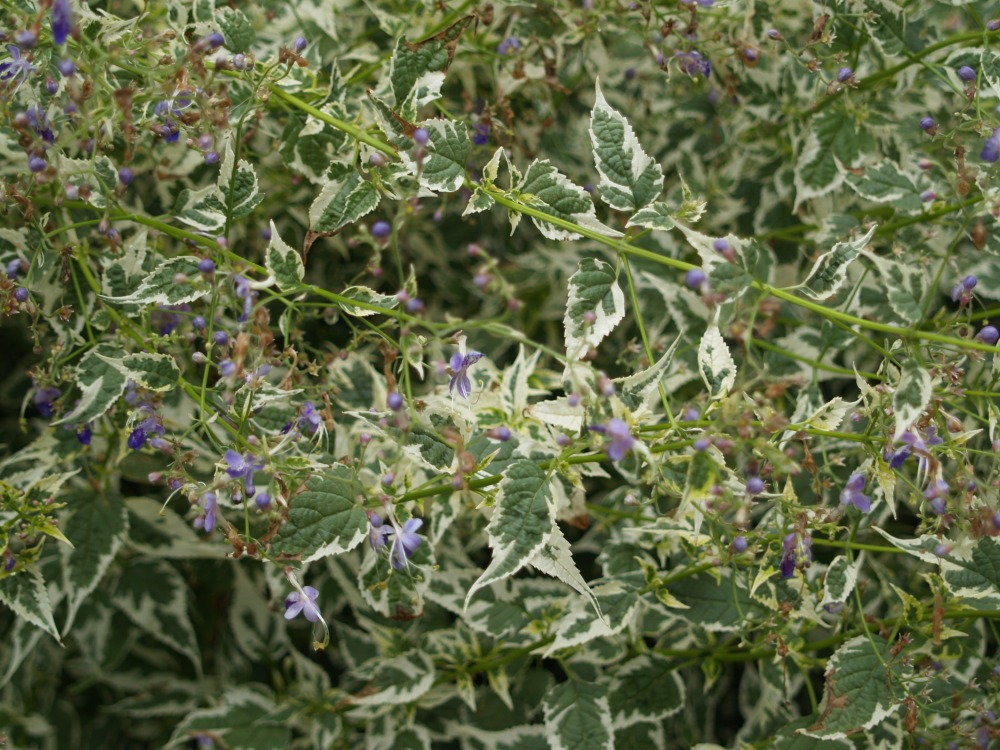
The drought has not bothered the late blooming shrubs and perennials much at all, though the variegated ‘Snow Fairy’ caryopteris (above) came into bloom and out in a rush. I have made an effort to have something blooming in my garden from February into December, and of course this is easily accomplished in the spring months, and even through the summer, but is not so difficult in the autumn as you might expect. Today we’ll visit some of the blooms in the garden, and since the list is long we’ll take a break at the mid point to finish in a few days.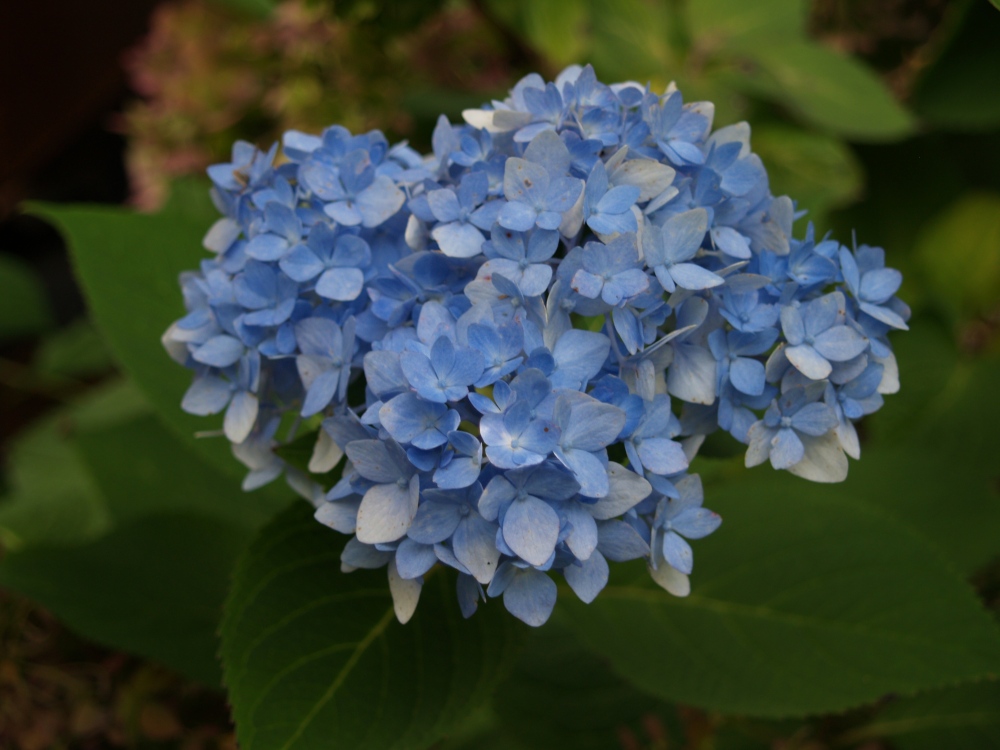
The reblooming mophead hydrangeas (Hydrangea macrophylla “Penny Mac’, above) delayed setting buds through the worst of the summer heat, and only in the past ten days have they set numerous buds. If the weather cooperates, and the first killing frost is delayed until the end of the month there will be large blue and white blooms (from Blushing Bride) for several more weeks.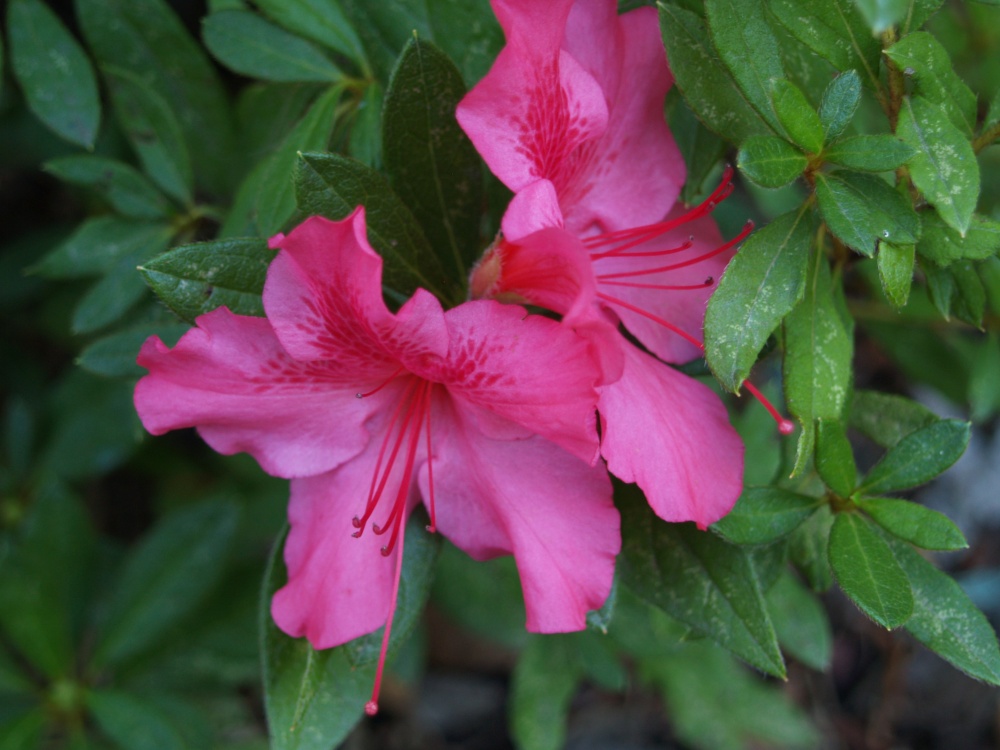
The Encore azaleas (above) bloom in my garden beginning in late April, and again mid September through the first heavy frost. This year several began their second bloom in mid August, have continued to bloom late into September, and I expect that there will be blooms for several weeks longer.
For whatever reason, the roses have bloomed more abundantly in September than I can recall, and despite the horrid heat and humidity the foliage of Knockout and Drift roses has not suffered at all from black spot. The Flower Carpet roses (Flower Carpet Red, above) have bloomed through summer, but foliage is sparse with some disease. I have planted several of a series of low growing roses called Oso Easy, and I’ve been quite happy with the repeat blooms of Paprika (below) and Cherry Pie, but they were planted too late in the season to speculate on their disease resistance in the garden.
The reblooming buddleia ‘Blue Chip’ (below) is new to the garden this year, and has proved to be more compact and floriferous than the more common cultivars. The spiky blooms are much shorter in length than the large growing types, but the period of bloom is longer, and the small size is more easily inserted into the garden. I have chopped other buddleias out after they became difficult to manage, but Blue Chip is a splendid addition, and of course it is a favorite of butterflies.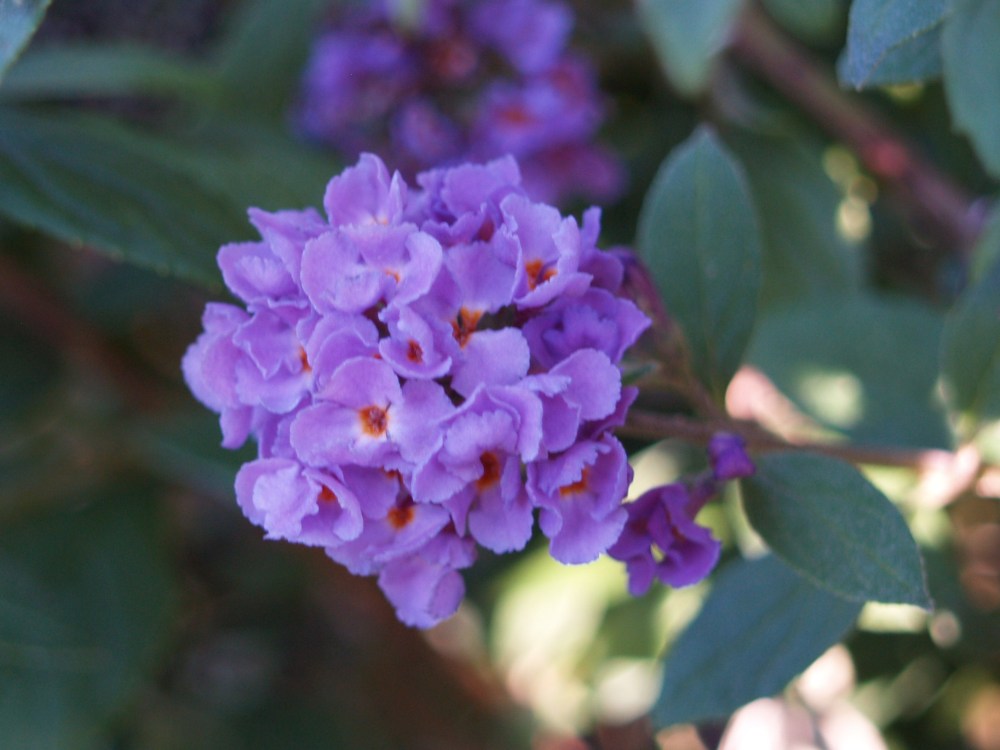
Beautyberries (Callicarpa dichotoma, below) have a coarse growing habit similar to the large buddleias, though they do not grow so quickly and have proven to be considerably less of a nuisance. I prune beautyberry to three feet each spring so that it stays within bounds, and in September the arching stems are covered in purple and white berries. It will tolerate wet ground, but its awkward shape and dull green foliage are best hidden at the back of the garden.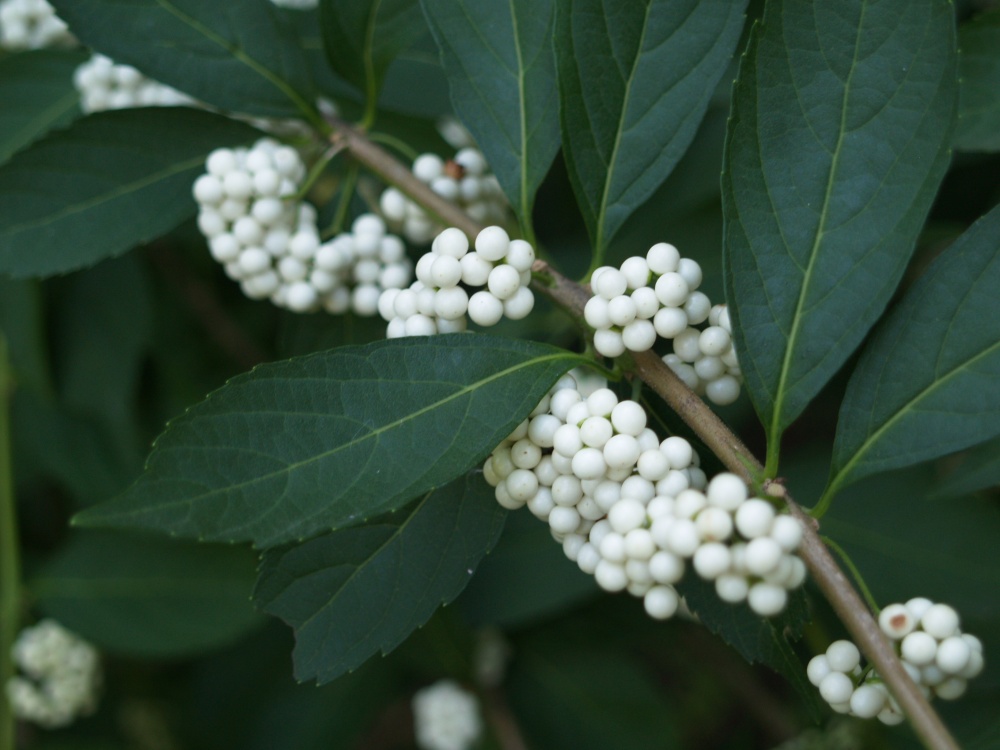
Another shrub new to the garden is Loropetalum ‘Emerald Snow’ (below), a compact grower with green foliage and ribbony, white spring blooms. The loropetalums are only marginally hardy in my garden, and the red leafed cultivars leaf late in the spring and don’t bloom. Emerald Snow reblooms after it is pruned, so it can be forced into flowering through the summer into the autumn. I will be anxious to see that it survives the winter since I have planted it later than I would prefer, and plants that are marginally cold hardy should be planted as early in the year as is possible so that they can establish themselves before the winter.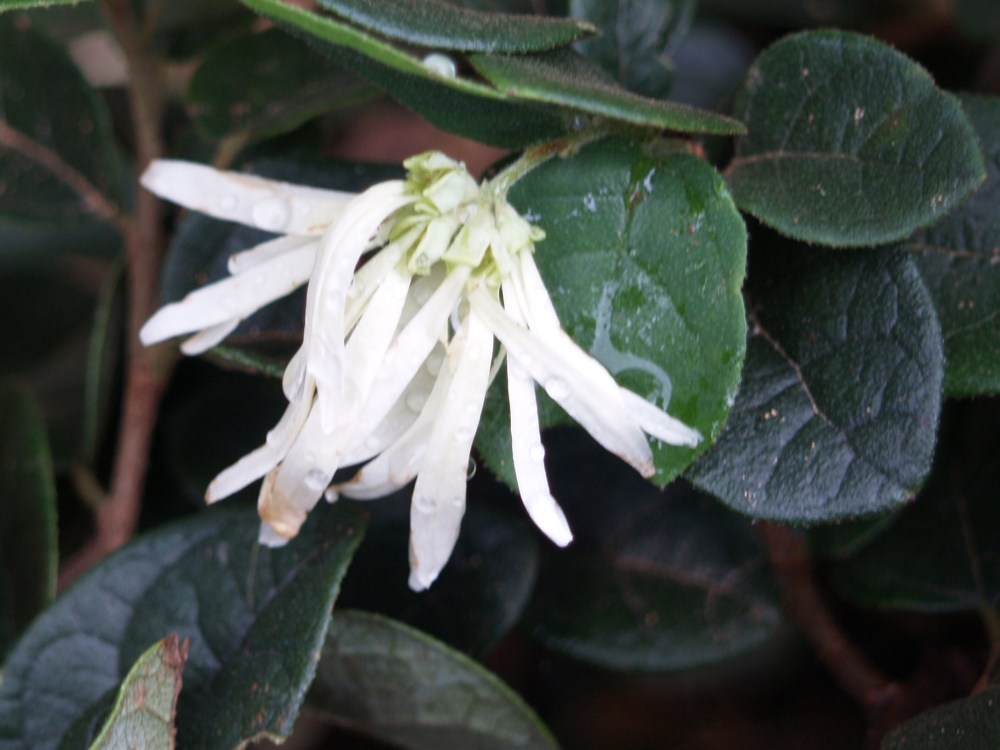
There are many blooming perennials in the garden, but too many to begin to list today, so we’ll continue our visit in a few days.
